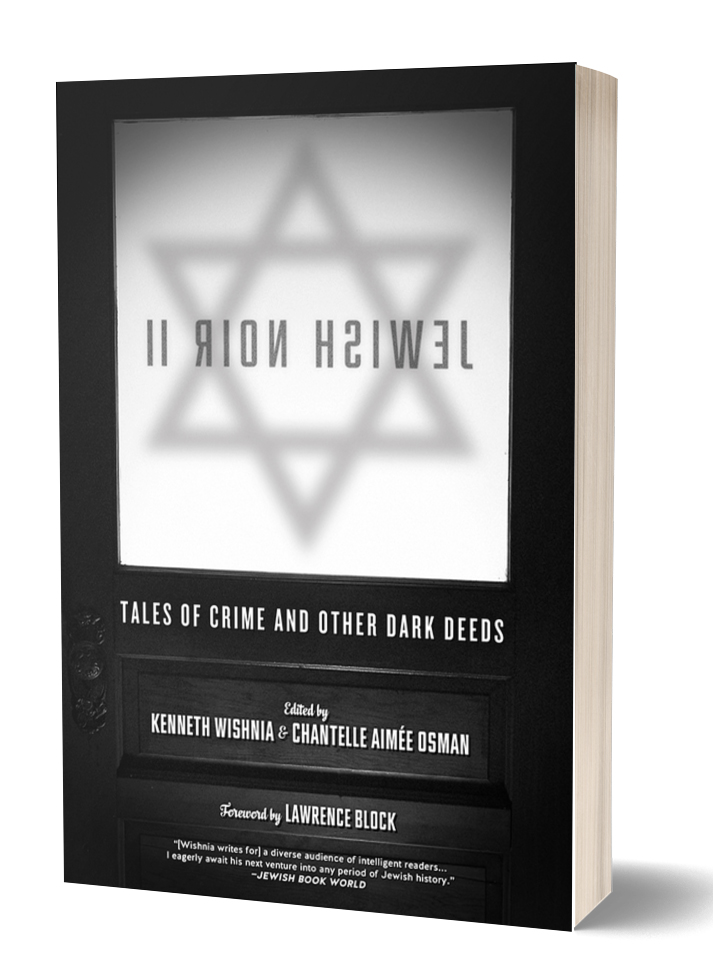By Rabbi Rachel Esserman
The Reporter Group
What does it mean to use the adjective noir to describe literature? In the case of mysteries, it means the works take a dim view of human nature. You’re not going to find wonderful, helpful people here; instead, you’ll find antiheroes and dark deeds. That’s certainly true of “Jewish Noir II: Tales of Crime and Other Dark Deeds” (PM Press). Kenneth Wishnia, editor of the first “Jewish Noir,” now serves as co-editor with Chantelle Aimée Osman. In his introduction to the first anthology, Wishnia noted how noir was becoming more popular in 2015 due to “economic insecurity, incompetence and corruption at all levels of government, disillusionment with the American dream, while those responsible for it all make millions and get away with murder.” In his new introduction, he writes of how things have become even worse, noting the increase in antisemitism, the rise of far-right nationalist parties and the worst Jewish massacre on American soil at the Tree of Life Congregation in Pittsburgh. Although few of the stories are directly political, they all offer a dark view of life.
The anthology is divided into sections, but Osman notes that what underlies all the stories is fear: “Many stories in this book [are] about people – sometimes quite literally – being torn apart by the stresses of modern society. Of multiple identities. Of external forces that make us choose something that we don’t want or believe in.” That makes for actions that, in other circumstances, would not have occurred or been condoned.
Some of the stories stood out:
“Taking Names” by Steven Wishnia juxtaposes the Triangle Shirtwaist fire with the way immigrant workers are treated in contemporary times. However, it’s the personal aspects of the story that will get under readers’ skins, particularly its ending.
Elizabeth Zevlin’s “The Cost of Something Priceless” discusses the importance of family tradition and what must be done to protect it. Its conclusion was awesome.
“The Black and White Cookie” by Jeff Markowitz took an unexpected and moving direction. It offers a meaningful look at the way children may not understand the reality of their parents’ lives until they, too, are adults.
Craig Faustus Buck’s “The Shabbes Goy” is a strange tale that shows how good cannot always compete with evil, and that, sometimes, the end does justify the means.
Readers may guess the ending of “To Catch a Ganef” by Lizzie Skurnick, but that won’t stop them from enjoying her very clever ideas.
“Inheritance” by Terry Shames is also very clever, although it leaves some details of the story open for debate.
A different dilemma is noted in Eileen Rendahl’s “Brother’s Keeper,” which also has an ending that will keep readers guessing.
“The Almost Sisters” by Ellen Kirschman was predictable, but one of the few stories with an almost sweet ending.
E. J. Wagner’s “Paying the Ferryman” is another story about a clever woman who takes matters into her own hands to make certain life continues the way it should.
“The Just Men of Bennet Avenue” by A. J. Sidransky was, on the one hand, gross, and, on the other, extremely well done and satisfying.
Rabbi Ilene Schneider’s “Triangle” also refers to the Triangle Shirtwaist fire, but focuses on a different part of the story. It manages to be both sweet and frightening at the same time.
Jen Conley’s “Hunter” shows just how difficult it is to understand another person’s truth, and whether or not they are a danger to society.
To my surprise, it was the gruesome tales that appealed the most. That just shows how well done they are. The stories with surprising or unexpected endings were the most fun, although others are so well done, they were satisfying even after guessing the ending. Readers who like dark mysteries will find a great deal to enjoy. And, if they are looking for laughs most of the stories do not offer, they’ll find them in the introduction by the master mystery writer Lawrence Block (whom I had not realized was Jewish). If life in America continues with the division and darkness we’re experiencing, I think a “Jewish Noir III” may be in the works.






